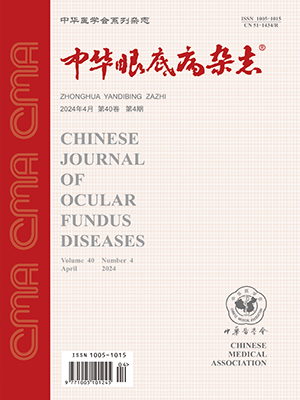Objective To observe the expression of molecules on surface of dendritic cells (DC) in retinoblastoma (RB) patients, and investigate its relationship with immune function. Methods The peripheral blood of 50 normal subjects (control group) and 18 RB patients (RB group) were collected to proliferate the DC.The mixed lymphocyte reaction was performed on DC of the control and RB group to detect the antigen-presenting ability. The DC of control group was cultured in the supernate of SO-RB50 with the different concentration of 25% (group A), 50% (group B) and 75% (group C). Then the expression of HLA-DR, CD54 and CD80 on surface of DC were detected by flow cytometry (FCM). Results The Results of MLR showed that DC antigen-presenting ability was gradually enhanced with the increase of stimulation of the cell. And the DC antigen-presenting ability of the control group was superior to that of the RB group (P<0.05). The expression of HLA-DR, CD54 and CD80 on surface of DC in the control group (12.14 plusmn;2.52, 34.89 plusmn;5.12, 10.93 plusmn;3.1) were significantly higher than that in the RB group (7.33 plusmn;2.20, 25.28 plusmn;4.54, 7.89 plusmn;3.75) (t=4.07, 3.96, 2.59; P<0.05). The expression of HLA-DR, CD54 and CD80 on surface of DC in the group A, B and C (HLA-DR: 9.95 plusmn;2.55, 6.48 plusmn;1.82, 3.11 plusmn;1.47; CD54: 34.75 plusmn;4.92, 21.25 plusmn;3.44,15.41 plusmn;3.52; CD80: 9.15 plusmn;2.18,5.05 plusmn;2.01,2.90 plusmn;1.10) were reduced in varying degrees compared with the control group; and with the increase of the concentration of supernate SO-RB50, the reduction was more evident (F=8.96,13.62, 20.72; P<0.05). Conclusions The expression of molecules on surface of DC in RB patients is lower than that in the normal subjects. It is closely related to the functional deficiency of DC.
Citation: 唐松,应方微,何静,张国明. The expression of molecules on surface of dendritic cells and its relationship with immune function in retinoblastoma patients. Chinese Journal of Ocular Fundus Diseases, 2011, 27(5): 446-449. doi: Copy




